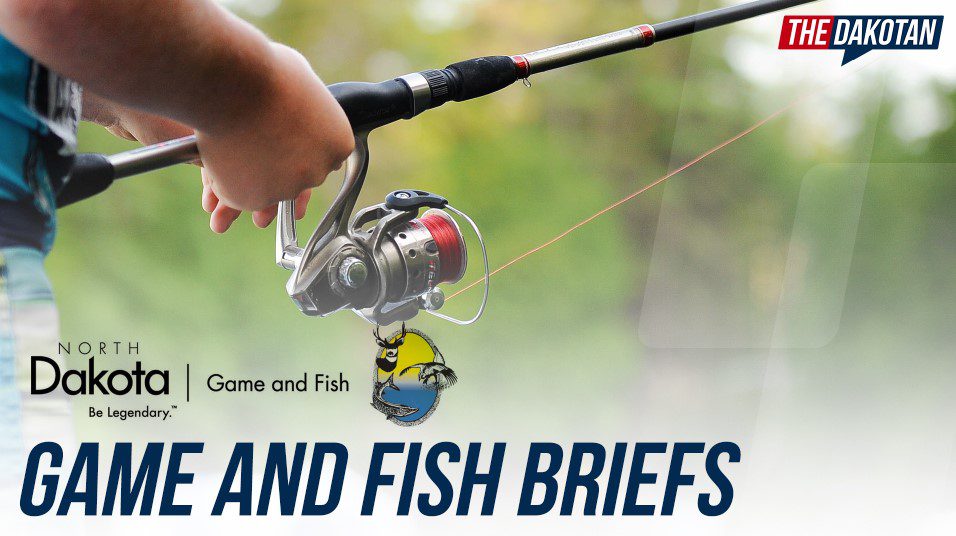

Spring Grouse Counts Reported
North Dakota Game and Fish Department upland game biologists summarized the spring survey results for sharp-tailed grouse, ruffed grouse and greater sage grouse.
Summaries from the spring sharp-tailed grouse census indicate a 13% decrease in the number of male grouse counted compared to last year. Statewide, 2,639 sharptails were observed on spring dancing grounds this year compared to 3,281 in 2021. Male grouse recorded per square mile (4) was slightly above the 10-year average (3.8).
“These declines align with poor reproduction documented during the 2021 drought,” said Jesse Kolar, upland game management supervisor. “We observed low sharptail reproduction rates during late summer roadside counts and found a low juvenile-to-adult ratio from hunter-submitted wings.”
Survey results indicate a 52% increase in the number of ruffed grouse drums heard in the Turtle Mountains, but a 5% decrease in drums heard per stop in the Pembina Hills.
“When combined, survey results indicate a steady population of ruffed grouse drums heard in 2022 compared to 2021,” Kolar said.
A total of 14 male sage grouse were counted on one active lek this spring, down seven males from six leks. North Dakota does not offer a hunting season on sage grouse due to a low population.
Game and Fish staff conduct late summer roadside counts from late-July through August to survey upland game broods and will release a summary in early September, Kolar said.
“Despite the decrease, the fall outlook will include the spring breeding adults plus successful broods,” he added. “This spring had poor residual grass following the 2021 drought. Early nesting was further disrupted by significant snowstorms in the second and third weeks of April. However, the result is a grassland landscape with abundant, tall nesting vegetation for mid- to late-season nesting attempts. We'll see if that is enough to protect chicks from summer storms."
2021 Upland Game Seasons Summarized
North Dakota’s 2021 pheasant, sharp-tailed grouse and Hungarian partridge harvests were down from 2020, according to the state Game and Fish Department. Upland game biologist R.J. Gross said the overall harvest was likely a result of fewer hunters and below average reproduction.
“We anticipated a slight decrease in upland game harvest for the fall in 2021 based on small brood sizes and a decline in observations per mile during our late summer roadside counts.” Gross said. “Although anecdotal reports from hunters indicated 2021 reproduction was better than we reported, the juvenile-to-adult ratio from our hunter-submitted wings confirmed that 2021 reproduction was below average for pheasants and sharptail.”
Last year, 47,020 pheasant hunters (down 18%) harvested 259,997 roosters (down 21%), compared to 57,141 hunters and 330,668 roosters in 2020. Counties with the highest percentage of pheasants taken were Hettinger, Divide, Bowman, Williams and Stark.A total of 15,762 grouse hunters (down 21%) harvested 45,732 sharp-tailed grouse (down 47%), compared to 19,971 hunters and 86,965 sharptails in 2020.Counties with the highest percentage of sharptails taken were Mountrail, Burleigh, Ward, Divide and Kidder.
Last year, 14,013 hunters (down 17%) harvested 44,822 Hungarian partridge (down 14%). In 2020, 16,795 hunters harvested 52,251 Huns. Counties with the highest percentage of Hungarian partridge taken were Mountrail, Ward, Stark, Williams and Divide.
Watchable Wildlife Photo Contest
Photographers who are interested in sending photos for the North Dakota Game and Fish Department’s Watchable Wildlife Photo Contest must follow guidelines for submitting their work.
Photographers should go to the Game and Fish Department’s website at gf.nd.gov/photo-contest. Then it is a matter of providing some pertinent information about the photo and uploading it. Doing so helps both with ease of submitting photos for the photographer and managing those images for department staff. The contest is now open and the deadline for submitting photos is Oct. 3. For more information or questions, contact Patrick Isakson, department conservation biologist, at pisakson@nd.gov.
The contest has categories for nongame and game species, as well as plants/insects. An overall winning photograph will be chosen, with the number of place winners in each category determined by the number of qualified entries.
Contestants are limited to no more than five entries. Photos must have been taken in North Dakota. By submitting an entry, photographers grant permission to Game and Fish to publish winning photographs in North Dakota OUTDOORS, and on the department’s website.